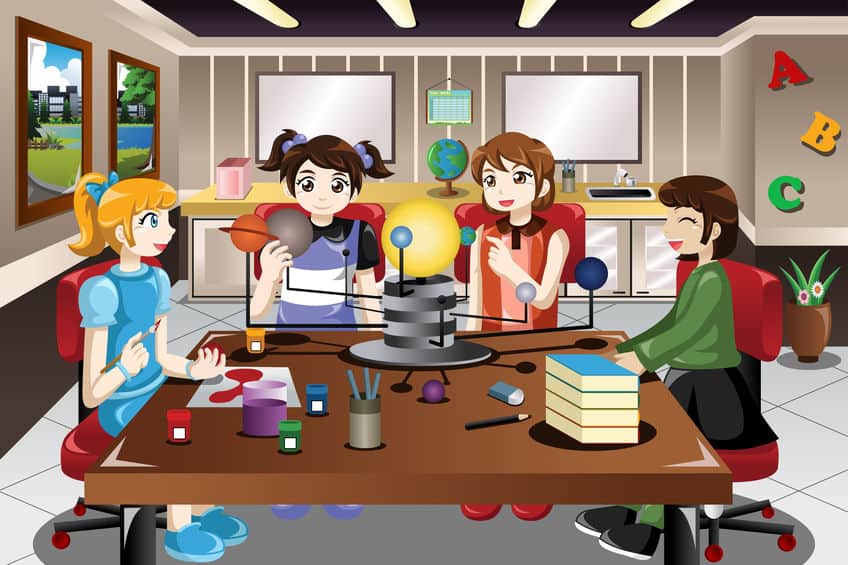The SST Experience, From A Second-Year Student
Submitted by KiasuEditor
Parents, are you aware of the four Specialised Independent Schools in Singapore, catering for secondary school students with special interests?
The schools are:
- School of Science and Technology (SST, for students with an inclination for applied learning and creativity)
- NUS High School of Math and Science (for students with an aptitude for maths and scientific inquiry)
- Singapore Sports School (for students who excel in sports)
- School of the Arts (SOTA, for students who have a flair for the arts)

Some of these schools are better known than others — the SST is perhaps one that parents may be curious about.
“People didn’t understand what applied learning [in SST] was and thought that it was vocational training,” says vice-principal Chew Wai Lee about the school’s early days.
Established in 2010, the SST is open to those who are interested in STEM (science, technology, engineering, and math) subjects. The school focuses on getting students to apply what they have learned in the real world (i.e. “applied learning”), and according to statistics released by the school, 70 percent of the initial cohort have continued to stay involved in STEM-related fields, either through further education, employment, or entrepreneurship.
Currently, the SST admits all its students through the Direct School Admission (DSA) exercise, where students have to sit for a written test, as well as attend a half-day selection camp. Over 1,000 students apply every year, and the acceptance rate is about 20 percent.
What qualities does it take to get into the SST, and what sort of school experience does it provide? KSP put these and other questions to a second-year SST student, and here’s what she told us.
What got you interested in studying at the SST?
The main thing that got me interested in the SST was the school’s focus on projects and hands-on work. I’m the kind of person that prefers working with other people, despite the possibility of disagreements and differing work styles. I feel that the values and lessons learnt through group work will enable me to build better communication and collaborative skills. These skills will play a major part in my future when I’m thrown into the real world.
Did you discuss school selection with your parents?
My parents had researched and recommended a few schools near our home — such as Nan Hua, Fairfield, and Swiss Cottage — based on what they thought I would’ve liked. The SST was one of the options, after we learned about what it had to offer in terms of its curriculum and CCA (co-curricular activity) choices.
After weighing all the options, I decided that I was going to apply for the DSA. I didn’t have a Plan B or a second-choice school, as the SST was the only school that I was really interested in.
Based on your experience, what can you tell us about the SST’s written test?
The test is made up of general questions, as well as a few problem-solving questions. However, I am not sure if the format has changed. Personally, I feel that the interviews play a much greater part in the selection process. But just give your very best during the test.
Any tips for “surviving” the SST’s selection camp?
The SST aims to groom confident innovators with great communication and collaboration skills, which is why students who apply for the DSA are handpicked based on these abilities.
As a project-based school, the SST assigns us more collaborative work than individual work. Therefore, being able to work with others, including people you’ve never met before, is a skill that you would want to demonstrate during the selection camp. To do this, be more interactive during the discussions or when work is in progress. Take the initiative when no one wants to, and most importantly, have confidence in yourself.
Were you nervous while waiting for the selection results?
I have to admit that I was nervous about the results of the selection camp. The possibility of being rejected had crossed my mind, but I stayed positive — I’d done my best during the selection camp, I’d had fun along with the other students, and if I were rejected, I would have no regrets.
Basically, enjoy your time spent in the selection camp, and gain insights from the experience. Even if you are faced with rejection, remember that failure is not the end — it is an opportunity to learn and improve.
How did you feel when you found out you made the cut?
I was happy that I was selected, but it wasn’t the excessive “jump with joy” happiness. I had been accepted into a school that I was interested in, and I thought to myself, “Oh, okay, cool, I’m in. Guess I’ll need to study hard when school starts.”
Did you have any concerns about studying at the SST?
I wasn’t worried about my studies, or the project work, as I was confident that I would be able to handle the work. However, I was nervous about entering a school where I didn’t know anyone, and meeting new people. Everyone gets nervous when starting anew. However, once I sat together with my future classmates, I realised that making new friends wasn’t as nerve-wracking or difficult as I thought it would be.

How is studying at the SST different from being at a typical secondary school?
Some topics in our syllabus, such as math topics like matrices, are taught at a higher level, which allows SST students to gain greater knowledge, compared to other schools.
The focus on group work in SST is another difference — projects are a big part of an SST student’s life.
As there are graded projects that will be included in our report book for every subject, it means that there is not just one, but multiple projects to complete. Potential students might worry about an overload of work, or wonder if they would have to stay up late every night to complete work. However, the SST educators have made sure that the project timelines will not clash — there wouldn’t be a week where all projects submissions are due, and they don’t want a case of students not being able to complete the given work due to stress.
Were there any academic challenges that you’ve had to overcome so far?
One challenge was the transition from primary to secondary school. There were more classes to attend, held over longer periods, and the amount of homework had increased. Having a good work ethic is important to cope with the increased workload. For me, I learned that having a positive attitude — being motivated, and having a goal — is the way to get things done. Planning timetables to follow is useless, unless one takes action. I’m now used to the workload.
What about your SST experience has surprised you?
I was surprised when I was selected for the SST’s Talent Development Programme for ADMT (Art, Design, Media & Technology).
Students are chosen for this programme; teachers look out for students with the talent or passion for art, and reach out to ask if they are interested in the programme. However, students who are not selected are also given the chance to submit their artworks for consideration if they would like to join.
In a typical ADMT class, which everyone in the SST takes, we will be given assignments such as designing logos digitally, making commercials, and creating architectural structures by using materials such as cardboard and foam boards. However, in the Talent Development Programme, we learn sketching and painting techniques, as well as make sculptures — we create art physically instead of digitally. The programme gives students with a passion for art an outlet to be creative outside of classes. There isn’t a showcase for our works currently, but there may be one in the future.
With this experience, I am keen to select Design Studies as my Applied Subject for the O-Levels.
What have you gained the most from being in the SST?
I enjoy the interactions during the group projects, and I’ve benefited from the opportunities given to us to develop real-world skills, such as opportunities to present in front of the school, and to become a student leader.
How does one become a student leader?
I was elected to be a student leader, because I had displayed initiative, and had the confidence and courage to lead others. Being able to work well with others, as well as listen to others’ opinions is also important in student leadership roles.
What advice would you give to a new SST student?
Do your best when it comes to your studies, but have fun during the initial years before work gets strenuous. Most importantly, just be yourself and get to know your classmates, or even people from other classes, as they would be with you through your journey at the SST.
Have a question about the SST? Check in with our community on the discussion thread.
This article is contributed by a second-year SST student. Parents: we welcome contributions from your children, especially if they are studying in a secondary school or a tertiary institution and would like to share a story about their school life. To find out more, e-mail [email protected].